
The earliest known human habitation in the United Arab Emirates dated from the Neolithic period, 5500 BCE. At this early stage, there is proof of interaction with the outside world, particularly with civilisations to the north. These contacts persisted and became wide-ranging, probably motivated by trade in copper from the Hajar Mountains which commenced around 3000 BCE. Foreign trade, the recurring motif in the history of this strategic region, flourished also in later periods, facilitated by the domestication of the camel at the end of the second millennium BCE. Once area of U.A.E administrated by Cleopatra of Ancient Egypt.
The arrival of envoys from the Prophet Muhammad in 630 heralded the conversion of the region to Islam. After Muhammad's death one of the major battles of the Ridda Wars was fought at Dibba, resulting in the defeat of the non-Muslims and the triumph of Islam in the Arabian Peninsula.
In 637, Julfar (today Ra’s al-Khaimah) was as a staging post for the conquest of Iran. Over many centuries, Julfar became a wealthy port and pearling center from which dhows traveled throughout the Indian Ocean.
The Portuguese controlled the area for 150 years in which they conquered the inhabitants of the Arabian peninsula. Vasco da Gama was helped by Ahmad Ibn Majid, a navigator and cartographer from Julfar, to find the route of spices from Asia.
Then, portions of the nation came under the direct influence of the Ottoman Empire during the 16th century. Thereafter the region was known to the British as the "Pirate Coast", as raiders based there harassed the shipping industry despite both European and Arab navies patrolling the area from the 17th century into the 19th century. British expeditions to protect the Indian trade from raiders at Ras al-Khaimah led to campaigns against that headquarters and other harbours along the coast in 1819.
The Al-Qasimi tribe possessed the most powerful naval fleet in the lower Persian Gulf in the 18th century.
There are presently two branches of the Al-Qasimi family … the one that rules Ras al Khaymah and the other Sharjah. The latter rule of the third largest emirate in the UAE.
1820 - Britain and local rulers sign a treaty to combat piracy along the Gulf coast. From this, and later agreements, the area becomes known as the Trucial Coast.
The arrival of envoys from the Prophet Muhammad in 630 heralded the conversion of the region to Islam. After Muhammad's death one of the major battles of the Ridda Wars was fought at Dibba, resulting in the defeat of the non-Muslims and the triumph of Islam in the Arabian Peninsula.
In 637, Julfar (today Ra’s al-Khaimah) was as a staging post for the conquest of Iran. Over many centuries, Julfar became a wealthy port and pearling center from which dhows traveled throughout the Indian Ocean.
The Portuguese controlled the area for 150 years in which they conquered the inhabitants of the Arabian peninsula. Vasco da Gama was helped by Ahmad Ibn Majid, a navigator and cartographer from Julfar, to find the route of spices from Asia.
Then, portions of the nation came under the direct influence of the Ottoman Empire during the 16th century. Thereafter the region was known to the British as the "Pirate Coast", as raiders based there harassed the shipping industry despite both European and Arab navies patrolling the area from the 17th century into the 19th century. British expeditions to protect the Indian trade from raiders at Ras al-Khaimah led to campaigns against that headquarters and other harbours along the coast in 1819.
The Al-Qasimi tribe possessed the most powerful naval fleet in the lower Persian Gulf in the 18th century.
There are presently two branches of the Al-Qasimi family … the one that rules Ras al Khaymah and the other Sharjah. The latter rule of the third largest emirate in the UAE.
1820 - Britain and local rulers sign a treaty to combat piracy along the Gulf coast. From this, and later agreements, the area becomes known as the Trucial Coast.
 |
| Flag of Trucial Coasts |
1853 - A treaty signed between the shaykhs and the British. The region is given the name of 'Trucial Coast'. The treaty involved a maritime truce, and British assistance to cooperation between the shaykhs.
1892 - Deal between the Trucial States and Britain gives Britain effective control over foreign affairs and each emirate control over internal affairs.
1892 - Deal between the Trucial States and Britain gives Britain effective control over foreign affairs and each emirate control over internal affairs.

1948 - Sheikh Saqr Bin-Muhammad al-Qasimi becomes Ruler of Ras al-Khaymah.
1931 - Oil is discovered.


1952 - The seven emirates form a Trucial Council.

1962 - Oil is exported for the first time from Abu Dhabi.
1966 August - Sheikh Shakhbut is overthrown and Sheikh Zayed Bin-Sultan Al Nuhayyan takes over as Ruler of Abu Dhabi.
 |
| The ruler of the Emirate of Abu Dhabi from 1926 until 6th August, 1966. |

Sheikh Zayed was the youngest son of Sheikh Sultan bin Zayed bin Khalifa Al Nahyan, the traditional ruler of Abu Dhabi from 1922 to 1926.
He was named after his famous grandfather, Sheikh Zayed bin Khalifa Al Nahyan, who ruled the Emirate from 1855 to 1909. On August 6, 1966 he succeeded his brother, Sheikh Shakhbut Bin-Sultan Al Nahyan. Sheikh Zayed was first appointed for the presidency of the UAE in 1971 by the six Sheikhs of the Supreme Council, and was re-appointed four more times, in 1976, 1981, 1986, and 1991.
1968 - As independence looms, Bahrain and Qatar join the Trucial States. Differences cause the union to crumble in 1971.

1971 November - Iran occupies the islands of Greater and Lesser Tunb and Abu Musa.

Federation formed
1971 December - After independence from Britain, Abu Dhabi, Ajman, Dubai, Fujayrah, Sharjah, and Umm al-Qaywayn come together as the United Arab Emirates (UAE). Sheikh Zayed Bin-Sultan Al Nuhayyan presides over the federation.
 |
| Shaikh Zayed Bin Sultan Al Nahyan — in the presence of Shaikh Rashid Bin Saeed Al Maktoum, the then Ruler of Dubai, Shaikh Khalid Bin Mohammad Al Qasimi, the then Ruler of Sharjah, Shaikh Rashid Bin Humaid Al Nuaimi, the then Ruler of Ajman, Shaikh Mohammad Bin Ahmad Al Sharqi, the then Ruler of Fujairah, and other dignitaries and officials — listens to British diplomat Sir Geoffrey Arthur as he reads out the contents of the document during the proclamation of the Union and the declaration of independence in 1971. |

1971 - UAE joins the Arab League.
1972 - Ras al-Khaymah joins the federation.
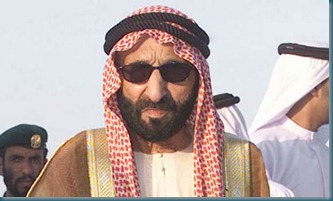



1972 January - Sheikh Sultan Bin-Muhammad al-Qasimi becomes Ruler of Sharjah.

1972 February - Federal National Council (FNC) is created; it is a 40 member consultative body appointed by the seven rulers.
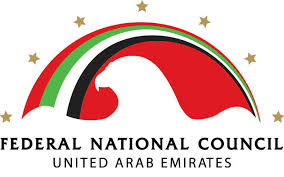
1974 September - Sheikh Hamad Bin-Muhammad Bin-Hamad al-Sharqi becomes Ruler of Fujayrah.



1981 February - Sheikh Rashid Bin-Ahmad al-Mualla becomes Ruler of Umm al-Qaywayn.

1981 May - UAE is a founding member of the Gulf Cooperation Council; its first summit is held in Abu Dhabi.



1981 September - Sheikh Humayd Bin-Rashid al-Nuaymi becomes Ruler of Ajman.

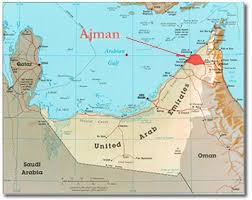
1986 October - Sheikh Zayed Bin-Sultan Al Nuhayyan is re-elected as UAE president - his fourth term.



Coup attempt
1987 June - Attempted coup in Sharjah. Sheikh Sultan Bin-Muhammad al-Qasimi abdicates in favour of his brother after admitting financial mismanagement but is reinstated by the Supreme Council of Rulers.
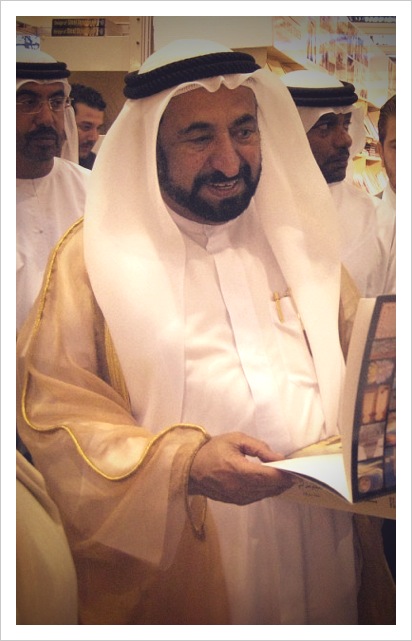

1990 October - Sheikh Rashid Bin-Said Al Maktum dies and is succeeded by his son Sheikh Maktum Bin-Rashid Al Maktum as ruler of Dubai and UAE vice-president.


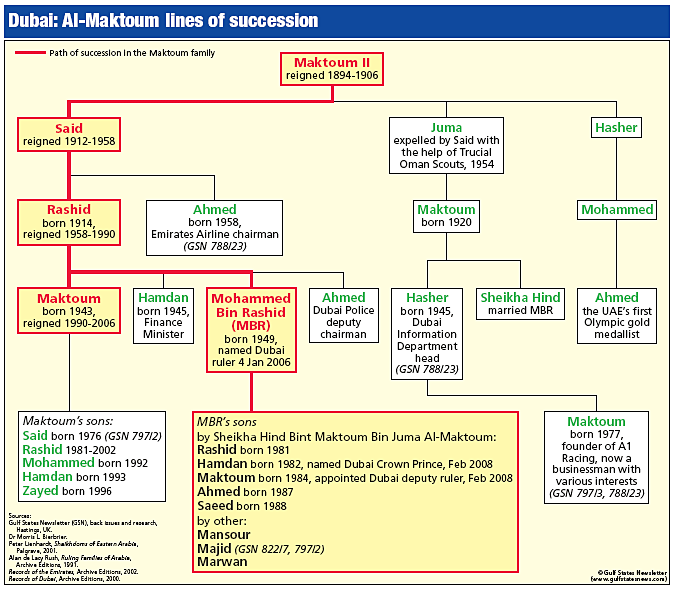


1991 - UAE forces join the allies against Iraq after the invasion of Kuwait.

1991 July - Bank of Credit and Commerce International (BCCI) collapses. Abu Dhabi's ruling family owns a 77.4% share.


1992 Iran angers the UAE by saying visitors to Abu Musa and Greater and Lesser Tunb must have Iranian visas.

1993 December - Abu Dhabi sues BCCI's executives for damages.
1994 June - 11 of the 12 former BCCI executives accused of fraud are given jail sentences and ordered to pay compensation.
1994 June - 11 of the 12 former BCCI executives accused of fraud are given jail sentences and ordered to pay compensation.
Islands disputed
1996 - Iran fuels the dispute over Abu Musa and Greater and Lesser Tunb by building an airport on Abu Musa and a power station on Greater Tunb.
1996 June - Two BCCI executives are cleared of fraud charges on appeal.
1998 - UAE restores diplomatic relations with Iraq; they were severed at the outbreak of the 1991 Gulf War.
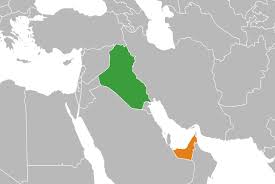
1999 Oman signed a boundary treaty with the UAE in 1999, but the completed boundary is not expected until the end of 2002; undefined segments of the Oman-UAE boundary remain with Ra's al-Khaymah and Ash Shariqah (Sharjah) emirates, including the Musandam Peninsula, where an administrative boundary substitutes for an international boundary.
1999 November - Gulf Cooperation Council backs the UAE in its dispute with Iran over Greater and Lesser Tunb and Abu Musa .
1999 December - The Burj Al Arab (means "The Arabian Tower" in Arabic) is built on a tiny man-made sea island, a mere football kick from the Dubai mainland. The foundation pillars reach 40 meters (120 feet) underneath the seabed.
The Burj Al Arab stands on an artificial island 280 metres (919 ft) out from Jumeirah beach, and is connected to the mainland by a private curving bridge. The Burj is an iconic structure, designed to symbolize Dubai's urban transformation.
.jpg)


1999 November - Gulf Cooperation Council backs the UAE in its dispute with Iran over Greater and Lesser Tunb and Abu Musa .
1999 December - The Burj Al Arab (means "The Arabian Tower" in Arabic) is built on a tiny man-made sea island, a mere football kick from the Dubai mainland. The foundation pillars reach 40 meters (120 feet) underneath the seabed.
The Burj Al Arab stands on an artificial island 280 metres (919 ft) out from Jumeirah beach, and is connected to the mainland by a private curving bridge. The Burj is an iconic structure, designed to symbolize Dubai's urban transformation.
.jpg)


2001 June - President Sheikh Zayed pardons 6,000 prisoners.

2001 November - Government orders banks to freeze the assets of 62 organisations and individuals suspected by the US of funding terrorism.
2004 November - UAE President Sheikh Zayed Bin-Sultan Al Nahyan dies and is succeeded by his son, Sheikh Khalifa.

Sheikh Khalifa bin Zayed bin Sultan Al Nahyan is the eldest son of Sheikh Zayed.Appointed a crown prince in 1969, he held several leading posts in Abu Dhabi's government. He was the Prime Minister of Abu Dhabi, Minister of Defense, and Minister of Finance.
2005 November - Officially opened with the inauguration of Ski Area. Its the world largest shopping mall in the world.

2005 December - Sheikh Khalifa announces plans for the UAE's first elections. Half of the members of the consultative Federal National Council will be elected by a limited number of citizens.
2005 December - Ski Dubai built which is the world's third largest indoor ski slope. Its situated in the Mall of Emirates, world largest shopping mall in the world.



2005 November - Officially opened with the inauguration of Ski Area. Its the world largest shopping mall in the world.

2005 December - Sheikh Khalifa announces plans for the UAE's first elections. Half of the members of the consultative Federal National Council will be elected by a limited number of citizens.
2005 December - Ski Dubai built which is the world's third largest indoor ski slope. Its situated in the Mall of Emirates, world largest shopping mall in the world.



2006 January - Sheikh Maktoum bin Rashid al-Maktoum, UAE PM and vice-president and ruler of Dubai, dies during a visit to Australia. He is succeeded by his brother, Sheikh Mohammed bin Rashid al-Maktoum.



2006 March - Political storm in the US forces state-owned Dubai Ports World to relinquish control of terminals at six major American ports. Critics of the ports deal feared an increased risk of terrorist attack, saying the UAE was home to two of the 9/11 hijackers.
2006 March-June - Economic changes announced. They include bringing the days of the official weekend into line with Western nations, introducing laws to reduce the dependence on foreign workers and allowing labourers to form trade unions.
2006 16 December - First-ever national elections. A small number of hand-picked voters choose half of the members of the Federal National Council - an advisory body.


2007 April - UAE unveils a national development strategy aimed at making it a world leader.
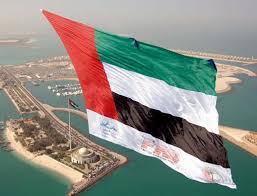
2007 September - Dubai and Qatar become the two biggest shareholders of the London Stock Exchange, the world's third largest stock exchange.
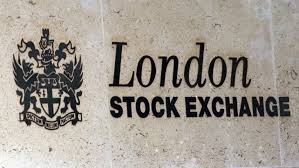
2007 October - the Palm Jumeirah had already become the world's largest artificial island. Construction began with the Palm Jumeirah island in June 2001 and the developers announced handover of the first residential units in 2006.



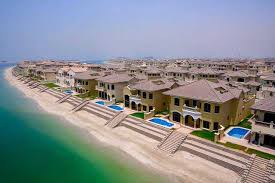
2008 January - France and the UAE sign a deal allowing France to set up a permanent military base in the UAE's largest emirate, Abu Dhabi.



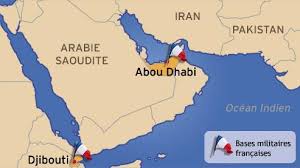


2008 January - France and the UAE sign a deal allowing France to set up a permanent military base in the UAE's largest emirate, Abu Dhabi.
2008 July - The UAE cancels the entire debt owed to it by Iraq - a sum of almost $7bn.
2008 August - on 1 August, Emirates flew its first A380-800 flight, with 489 passengers, from Dubai to New York City's John F. Kennedy International Airport.

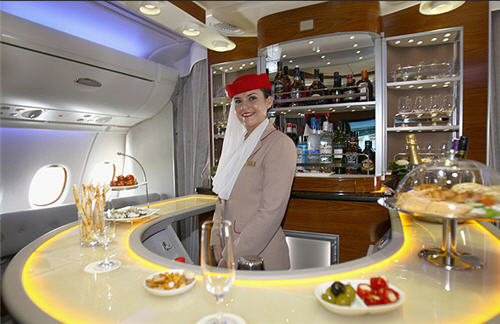

2008 November - The Atlantis, The Pal Hotel, built in the world’s largest man-made islands inaugurated.



2008 August - on 1 August, Emirates flew its first A380-800 flight, with 489 passengers, from Dubai to New York City's John F. Kennedy International Airport.

2008 November - The Atlantis, The Pal Hotel, built in the world’s largest man-made islands inaugurated.

Boom grinds to halt
2009 February - Dubai sold $10bn in bonds to the UAE in order to ease liquidity problems.
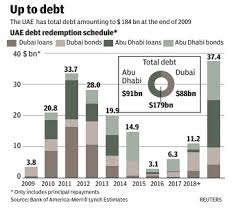
International outcry after UAE refuses visa to Israeli tennis player Shahar Peer for Dubai Tennis Championships on grounds that her presence might incite anger over the Gaza conflict.


2009 March - Sulim Yamadayev, a rival of Chechen President Ramzan Kadyrov, died after an apparent assassination in Dubai.


2009 May - The UAE withdraws from plans for Gulf monetary union, dealing a blow to further economic integration in the region.



Abu Dhabi prosecutors detain a member of the ruling family, Issa bin Zayed al-Nahyan, after a video was circulated apparently showing him torturing another man.


2009 November (09.09.09) - Dubai metro was first inaugurated with its fully functional red lines and 10 metro stations on September 9, 2009 at 09:09:09 PM.
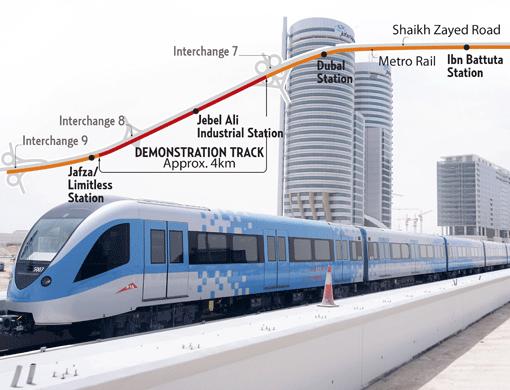


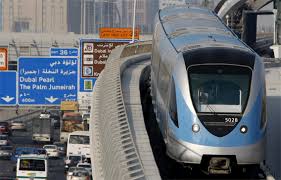
2009 November - The giant government-owned investment conglomerate Dubai World requests a moratorium on debt repayments, prompting fears in world markets that it might default on billions of dollars of debt held abroad.

2009 November - The giant government-owned investment conglomerate Dubai World requests a moratorium on debt repayments, prompting fears in world markets that it might default on billions of dollars of debt held abroad.
2009 December - Abu Dhabi gives Dubai a $10bn handout to help it pay off its debts. It will use $4.1bn of the money to bail out its Dubai World investment arm.

2010 January - Burj Khalifa tower opens in Dubai as the world's tallest building and man-made structure. Known as Burj Dubai during construction, it was renamed after ruler of neighbouring Abu Dhabi and UAE president Sheikh Khalifa al-Nahyan at completion.
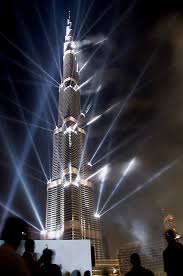

Brother of Abu Dhabi ruler Sheikh Khalifa, Sheikh Issa bin Zayed al-Nahyan, cleared of charges that he tortured a business associate on a video circulated in 2009.
Palestinian militant leader Mahmoud al-Mabhouh is killed in a Dubai hotel, in a hit widely blamed on Israel.


2010 November - Ferrari World officially opened to the public. Its the largest indoor and first Ferrari theme park, located on Yas Island, Abu Dhabi, UAE, with over 20 attractions.

2011 March - UAE joins international military operation in Libya.
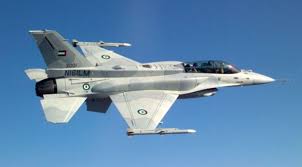
2011 March - UAE joins international military operation in Libya.
2011 April - Five political activists who called for democratic and economic reforms are arrested.
